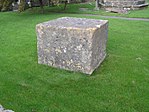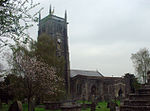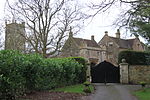Pagans Hill Roman temple
Ancient Roman templesArchaeological sites in SomersetBuildings and structures completed in the 3rd centuryHistory of SomersetRoman religious sites in England

The Pagans Hill Roman Temple was a Romano-British-style temple (Romano-Celtic temple) excavated on Pagans Hill at Chew Stoke in the English county of Somerset.
Excerpt from the Wikipedia article Pagans Hill Roman temple (License: CC BY-SA 3.0, Authors, Images).Pagans Hill Roman temple
Upper Pagans Hill,
Geographical coordinates (GPS) Address Nearby Places Show on map
Geographical coordinates (GPS)
| Latitude | Longitude |
|---|---|
| N 51.360732 ° | E -2.637358 ° |
Address
Upper Pagans Hill
Upper Pagans Hill
BS40 8UQ
England, United Kingdom
Open on Google Maps









